Embroidery, an ancient art form that weaves tales of craftsmanship and sophistication, often incorporates threads of gold and silver, elevating its allure.
Choosing these precious metals in embroidery isn’t merely a matter of aesthetics; it delves into a rich history of tradition, symbolism, and craftsmanship.
As we unravel the intricacies of this age-old practice, we discover the reasons behind the preference for threads that shimmer with the brilliance of gold and silver.
From royal garments to religious textiles, these metallic threads have adorned creations that transcend time. But have you ever wondered why threads of gold And silver are used in embroidery?
Join us on a journey into the world of embroidery, where every stitch with threads of gold and silver tells a story of luxury, cultural significance, and the enduring artistry of human hands. Let’s get started.
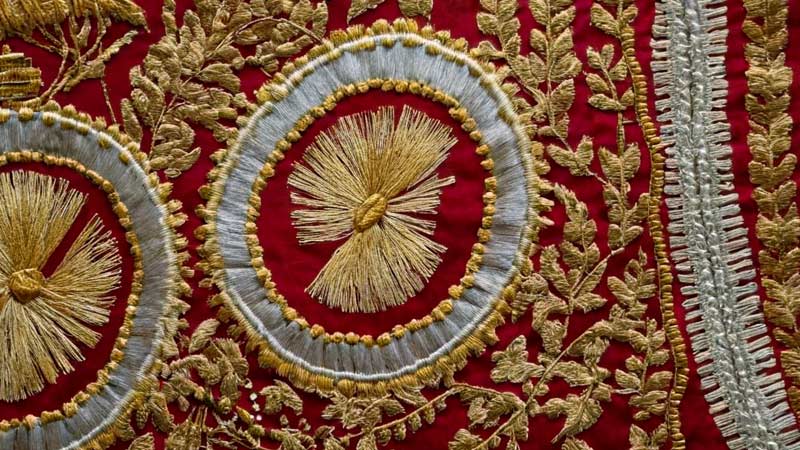
Why Are Threads Of Gold And Silver Used In Embroidery?
Embroidery adds a touch of luxury and sophistication to textiles. The reasons behind the utilization of these precious metals in embroidery are multifaceted, combining historical, cultural, and aesthetic elements.
Historical Significance
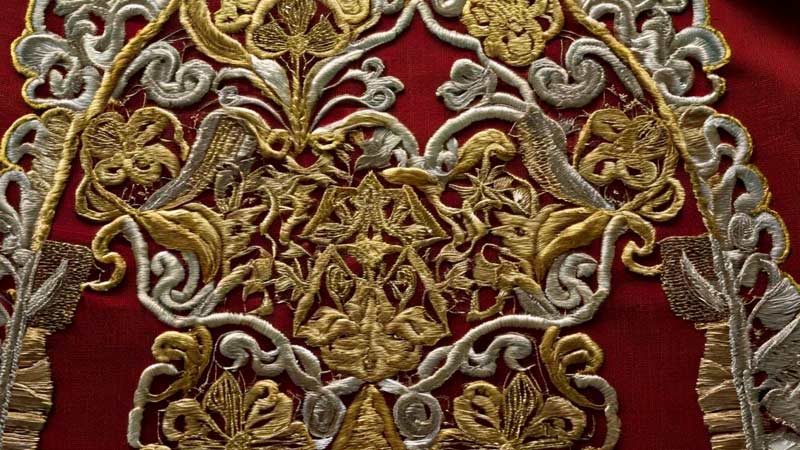
The use of gold and silver threads in embroidery dates back to ancient civilizations. In medieval Europe, the luxury of royal garments was heightened by the incorporation of gold and silver threads, showcasing the wealth and status of the wearer.
Similarly, in Asian cultures, especially during the Mughal era in India and imperial China, intricate embroidery with metallic threads adorned the clothing of emperors and dignitaries.
Symbolism of Wealth and Status
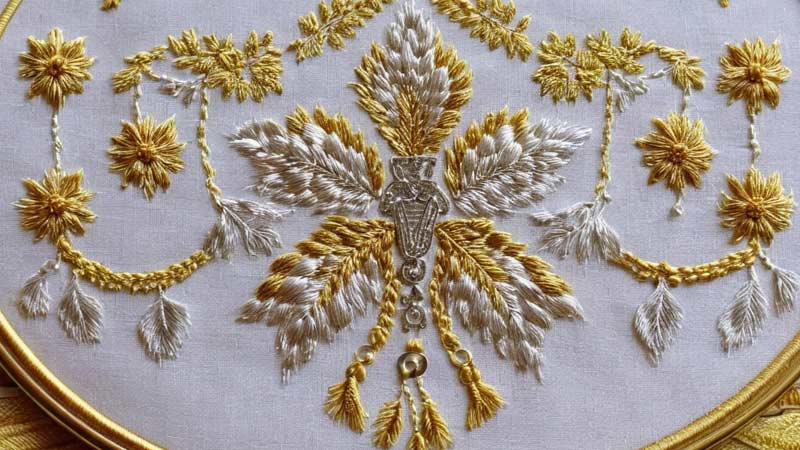
Gold and silver have long been symbols of wealth and prosperity. In many cultures, clothing embellished with these precious threads conveyed the financial standing of the wearer and their societal rank.
The shimmering threads served as a visual representation of affluence and luxury, making garments a form of wearable art that transcended mere functionality.
Religious Textiles
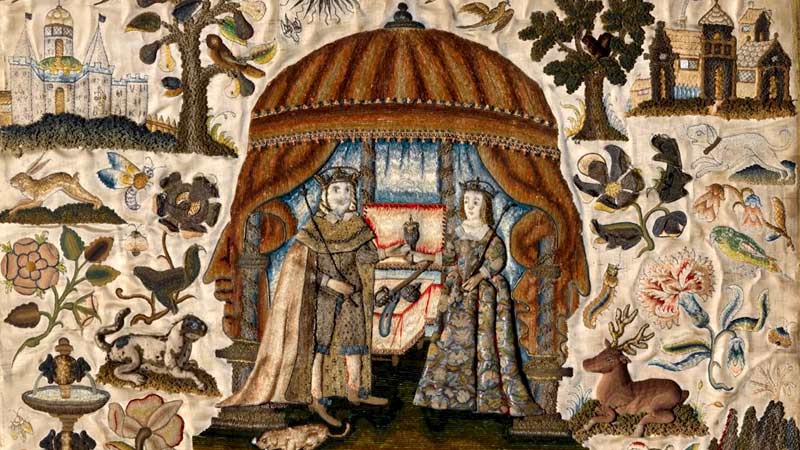
Embroidery with gold and silver threads is prevalent in religious contexts worldwide. Ecclesiastical garments, such as vestments worn by clergy members, often feature intricate embroidery with metallic threads.
This symbolizes the divine nature and the sacred significance of the attire. Similarly, in Hindu and Buddhist traditions, ceremonial garments and religious artifacts are embellished with gold and silver embroidery, signifying spiritual richness.
Ceremonial and Traditional Attire
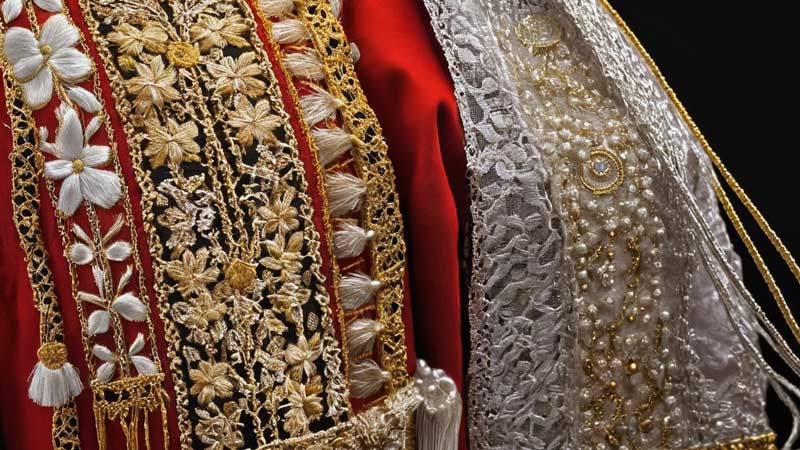
Weddings, festivals, and other cultural celebrations often involve embroidered garments, with gold and silver threads being particularly prominent.
In many cultures, these metallic threads are believed to bring good luck and blessings, making them an integral part of ceremonial attire. The intricate designs created with gold and silver embroidery contribute to the visual spectacle of such events.
Aesthetic Elegance
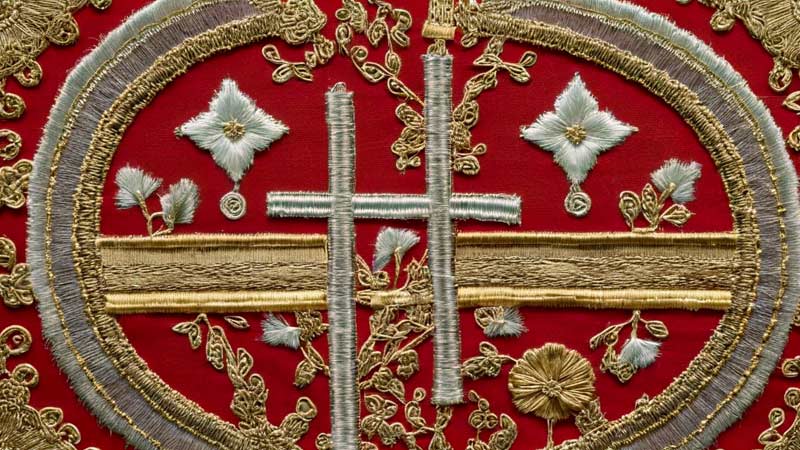
Beyond the symbolic and cultural aspects, the sheer visual appeal of gold and silver threads in embroidery is undeniable. The metallic luster adds a captivating dimension to the textile, catching the light in a way that regular threads cannot replicate.
This aesthetic quality enhances the overall beauty of the embroidery, making it a preferred choice for those who seek to create pieces that exude extravagance.
Versatility in Design
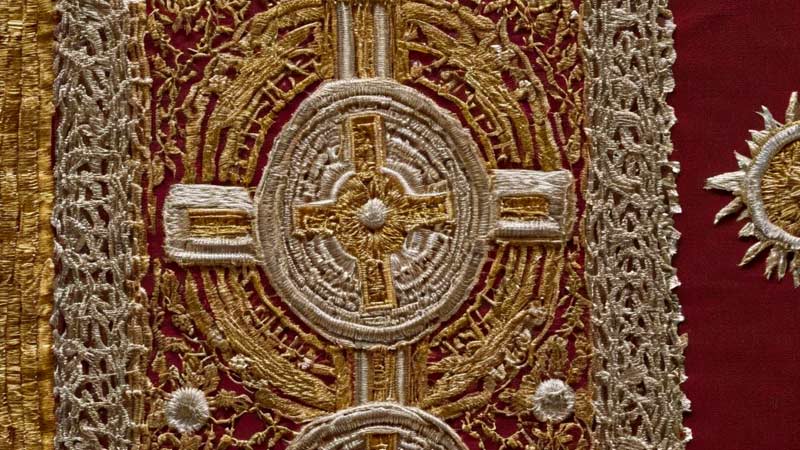
Gold and silver threads offer versatility that complements various design motifs. Whether used in floral patterns, geometric shapes, or intricate borders, these metallic threads can adapt to different styles, making them suitable for various embroidery projects.
The ability to create fine details and elaborate designs further contributes to the popularity of gold and silver threads among artisans.
Skill and Precision
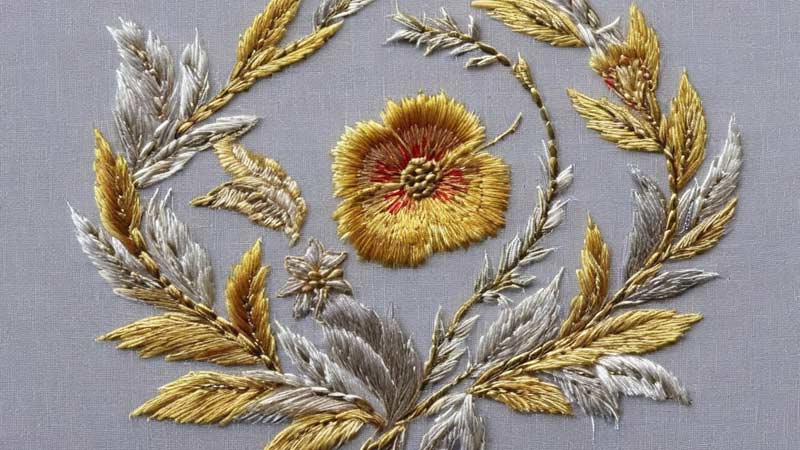
Working with gold and silver threads requires high skill and precision. The delicate nature of these metallic fibers demands expertise from the embroiderer, as any misstep could compromise the integrity of the design.
This intricate craftsmanship adds an element of exclusivity to embroidered pieces, elevating them to a status of artistry that goes beyond mere decoration.
Preservation of Tradition
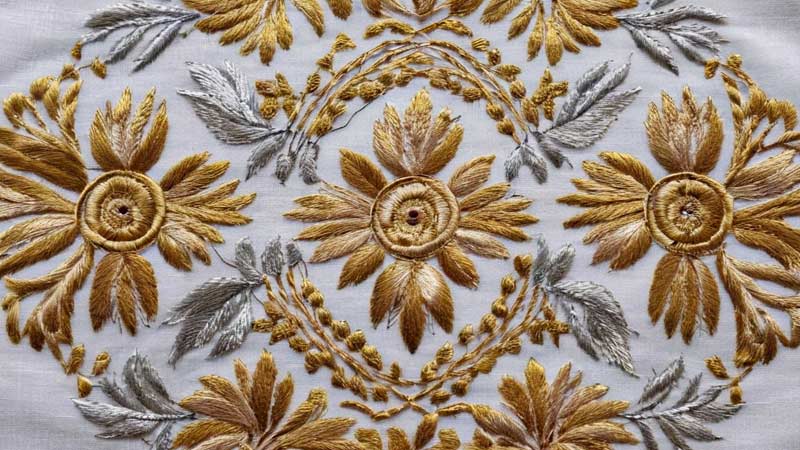
The use of embroidery gold thread is a tradition passed down through generations. Master embroiderers, often trained in specialized techniques, continue to preserve and propagate this art form.
The intricate knowledge and skills required for working with these precious threads contribute to the cultural heritage of gold and silver embroidery.
Uses of Threads of Gold and Silver
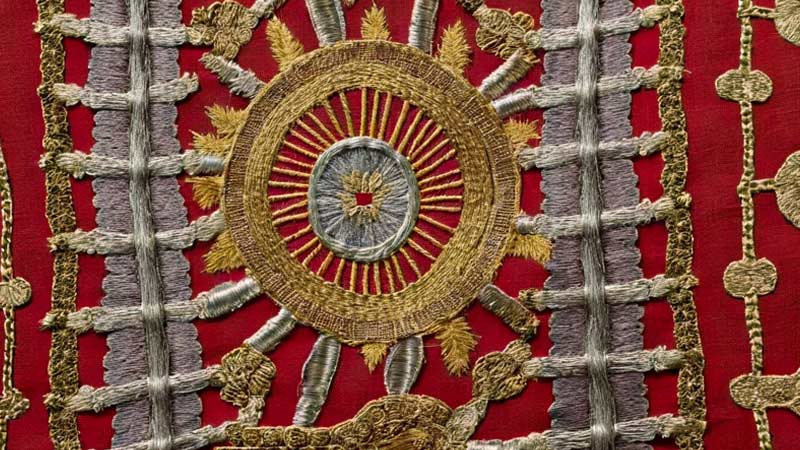
Gold and silver threads, known for their luxury and sheen, find versatile applications in sewing. Beyond their aesthetic appeal, these precious metallic threads serve many purposes, enhancing the beauty and functionality of various textile creations.
Embroidery and Decorative Stitching
The primary and perhaps most well-known use of gold and silver thread in sewing is for embroidery and decorative stitching.
These metallic threads add a touch of luxury to fabrics, allowing artisans to create intricate designs, patterns, and embellishments on garments, accessories, and home décor items.
Couture and Fashion Design
In the world of high fashion and couture, gold and silver embroidery thread is prized for its ability to elevate the elegance of garments.
Designers often incorporate these metallic threads into couture pieces, creating ornate details, borders, and motifs that define luxury fashion.
From bridal gowns to red carpet ensembles, gold and silver threads signify sophistication and glamour.
Quilting and Patchwork
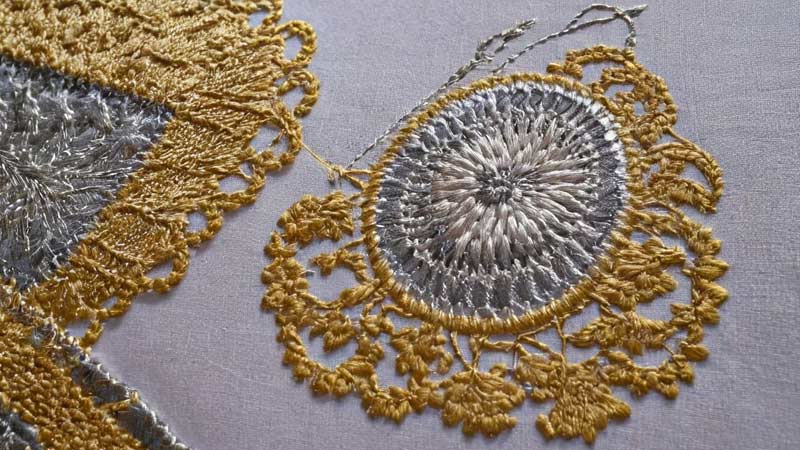
Quilters often utilize gold and silver threads to add a decorative element to their creations. Whether quilting intricate patterns or stitching together patchwork pieces, metallic threads bring a distinctive flair to quilts.
The shimmering effect enhances the overall aesthetic, making quilts not just warm covers but also art pieces.
Costume and Theatrical Design
In costume design for theater, film, and other performances, gold and silver threads are crucial in creating captivating costumes.
The reflective quality of these metallic threads enhances the visual impact of costumes under stage lights, adding glamour to characters and bringing theatrical productions to life.
Accessories and Jewelry Making
Gold and silver threads are not limited to fabric; they are also employed in jewelry making and accessory design.
From intricate threadwork in bead embroidery to creating woven metallic patterns for bracelets and necklaces, these threads create unique, handmade accessories with a touch of luxury.
Bookbinding and Leatherwork
Gold and silver threads are used to embellish covers and spines for artisans involved in bookbinding and leatherwork.
Delicate embroidery or stitching with metallic threads adds a refined touch to leather journals, book covers, and other handcrafted items, turning functional pieces into aesthetically pleasing works of art.
Home Décor and Soft Furnishings
Gold and silver threads find a place in home décor by creating luxurious soft furnishings.
Whether it’s embroidered throw pillows, decorative curtains, or intricately stitched table linens, these threads contribute to the overall ambiance of a space, infusing it with a sense of grandeur and sophistication.
Bridal and Special Occasion Wear
Gold and silver threads are famous for creating bridal attire and garments for special occasions.
The reflective nature of these metallic threads complements the celebratory atmosphere, making them ideal for wedding gowns, bridesmaid dresses, and other garments worn during significant events.
Art and Mixed Media Projects
Artists and crafters often incorporate gold and silver threads into mixed media projects. From textile art to collages and three-dimensional sculptures, these metallic threads provide a unique and eye-catching element, allowing artists to experiment with texture and shine.
Restoration of Antique Textiles
In textile conservation and restoration, gold and silver threads play a crucial role in preserving the authenticity of antique fabrics.
Skilled conservators use these threads to meticulously recreate missing or damaged sections of historical textiles, ensuring the original splendor is retained for future generations.
The uses of gold and silver threads in sewing extend far beyond mere embellishment.
From traditional embroidery to contemporary mixed media art, these metallic threads continue to be valued for their ability to enhance the beauty and significance of textile creations across a diverse range of applications.
FAQs
What is the significance of using gold and silver embroidery threads?
Gold and silver threads in embroidery hold historical, cultural, and aesthetic significance. Traditionally associated with wealth and luxury, these metallic threads elevate the visual appeal of embroidered textiles, symbolizing luxury and status.
How do gold and silver threads differ in embroidery applications?
Gold and silver threads offer different aesthetic qualities in embroidery. Gold threads exude warmth and richness, while silver threads provide a cooler, elegant shimmer. The choice between gold and silver often depends on the desired visual effect and the overall design aesthetic of the embroidered piece.
What metal is commonly used for embroidery besides gold and silver?
While gold and silver are popular choices, other metals like copper and metallic alloys are also used for embroidery. These alternatives offer unique colors and textures, allowing embroiderers to experiment with different visual effects and achieve diverse artistic expressions.
Can gold or silver thread be used interchangeably in embroidery?
Yes, gold and silver threads can often be used interchangeably in embroidery, depending on the desired effect. Mixing these metallic threads within a design can create intricate contrasts and enhance the overall visual appeal of the embroidery.
What does “silver threads among the gold” mean in embroidery?
Silver threads among the gold is a poetic expression that signifies a blend of precious elements, suggesting a combination of silver and gold threads in embroidery. This phrase is metaphorically used to convey beauty, harmony, and the delicate interplay of different elements in an embroidered piece.
Conclusion
The use of gold and silver threads in embroidery isn’t merely a choice of materials; it’s a celebration of history, culture, and the timeless pursuit of beauty.
From regal garments that signify status to religious textiles that embody devotion, these metallic threads weave narratives that stretch across civilizations.
The shimmering elegance of gold and silver enhances the visual appeal of embroidery and adds layers of meaning and significance to each stitch.
As we marvel at the intricate designs and impeccable craftsmanship, we understand that the art of embroidery with threads of gold and silver is a testament to human creativity, skill, and the enduring desire to encapsulate the essence of splendor in every needlework masterpiece.
Embroidery, with its threads of gold and silver, stands as a timeless art form, connecting the past with the present and leaving a legacy of beauty for generations to come.
Leave a Reply